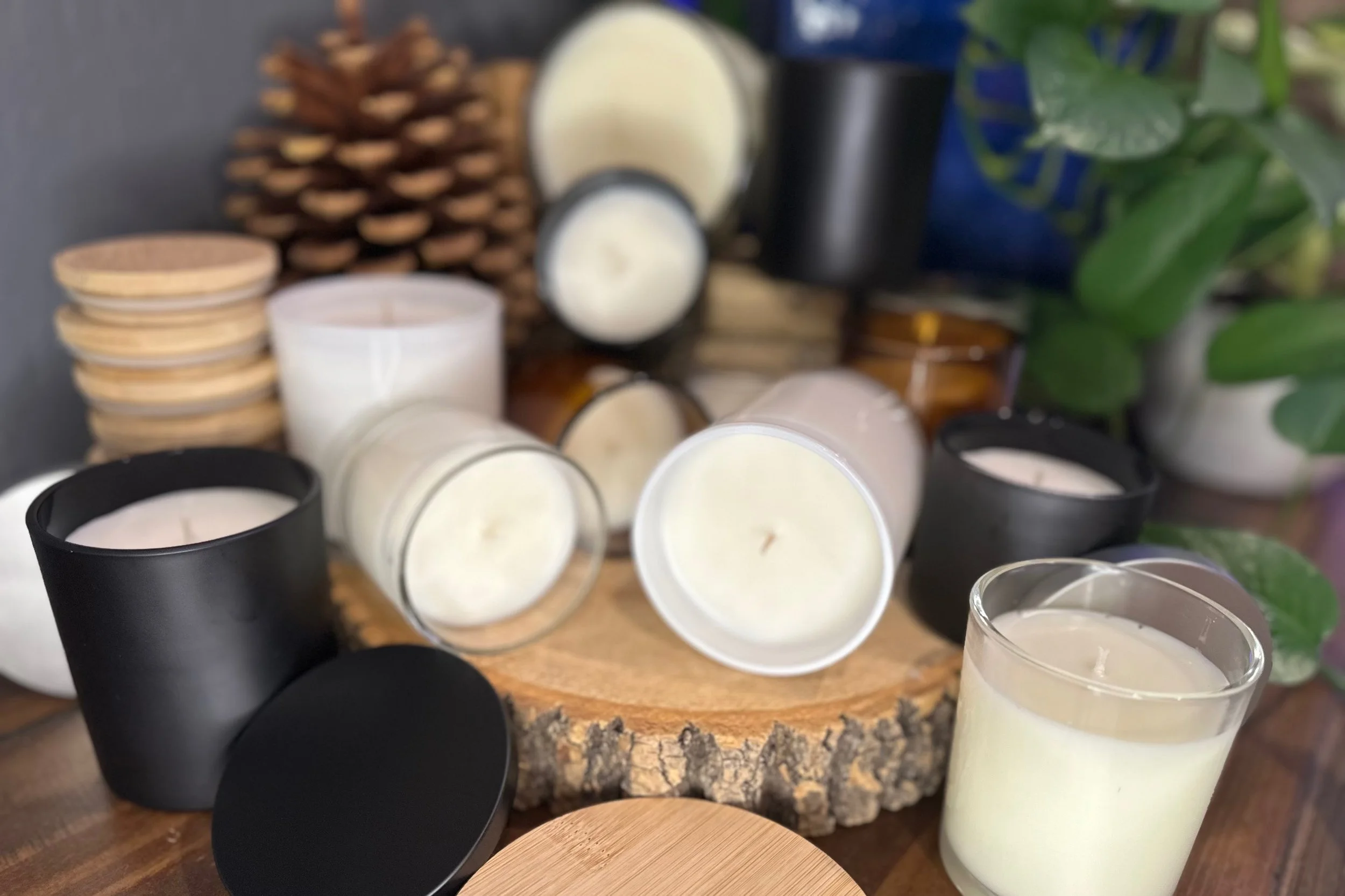What’s In Our Candles?
Let’s Talk Ingredients, Safety, and Transparency.
We love a good mystery… just not when it comes to what you’re breathing in.
At P.J. Candle Co., we’re all about full disclosure — no gatekeeping, no vague ingredient lists, and absolutely no shady stuff. Whether you’re shopping for yourself, a sensitive nose, or someone with scent sensitivities or allergies, you deserve to know exactly what’s in our candles (and what’s not).
On this page, you'll find direct access to the Safety Data Sheets (SDS) for each of our candle fragrance oils. These official documents list the ingredients used, outline any potential allergens or hazards, and give you all the info you need to make an informed decision. We link them straight from our suppliers — unfiltered and unedited.
We also break down:
What wax we use (hi, coconut apricot soy 🥥✨)
How we fragrance our candles (clean, high-quality oils — never phthalates)
What’s not in our candles (no parabens, no prop 65 nasties, and absolutely no BS)
Because transparency isn’t just a trend for us — it’s part of how we care for our customers, our craft, and our community.
Scroll down, click through, and read as much or as little as you like. And if you ever have a question? Just ask. We’re here for it.
Make it stand out.
Ingredient & Allergen Glossary
Because sometimes “limonene” sounds a lot cuter than it acts.
We know fragrance ingredient names can sound a little… science fair chic. So here’s a simple breakdown of common terms you might see on our Safety Data Sheets — including naturally occurring allergens that may be flagged for those with sensitivities.
Limonene – Found in citrus peels, this fresh-smelling compound pops up in many fragrances. Naturally derived, but can be irritating to some.
Linalool – A floral, lavender-adjacent compound found in many essential oils. Common, but also one of the more frequent allergens.
Citral – Bright, lemony, and found in lemongrass and citrus oils. Lovely scent, but worth noting for sensitive skin or noses.
Geraniol – Rose-scented and found in many botanicals. Naturally occurring, but flagged as a potential allergen.
Coumarin – Smells like sweet hay or vanilla. Found in tonka beans, often used in perfumes and candles.
Eugenol – Warm and spicy, typically found in clove or cinnamon oils. A common culprit for sensitivities.
Phthalates – We don’t use them. Ever. These are synthetic chemical compounds often used to extend fragrance longevity — but we’re not about that life.
Prop 65 Chemicals – Nada. None of our fragrances contain materials listed on California’s Prop 65 warning list. We check every time.
Frequently Asked Questions
We love a curious customer. Ask away.
Why are there allergens in fragrance oils?
Some allergens are naturally occurring in essential oils or botanical extracts — even the "clean" ones. Think of it like pollen in flowers: totally natural, but still a trigger for some people.
What’s a Safety Data Sheet (SDS), anyway?
It’s an official document provided by the fragrance supplier that lists ingredients, known allergens, potential hazards, and safe handling info. It's the industry standard for transparency — and we’re linking them all right here, because you deserve the full picture.
Where can I find the SDS links?
Right on this page under each fragrance name. No digging required.
Are your candles safe for people with asthma or chemical sensitivities?
Our candles are made with high-quality, clean-burning ingredients — but everyone’s body is different. If you’re sensitive to fragrance or have respiratory conditions, we always recommend checking the SDS and testing in a well-ventilated area before extended use.
Do your candles contain essential oils or synthetic fragrance?
Both! Many of our fragrances are blends of natural essential oils and high-quality synthetics designed for safe burning. We vet every single one for performance, safety, and vibes.
Can I request additional info if I don’t see something listed?
Absolutely. We’re happy to provide extra detail if needed. Just email us and we’ll do our best to get you the info you’re looking for.
Fragrances
-
-
Candle Science White Eucalyptus
This fragrance contains cis-3-hexenyl salicylate.
-
-
-
-
-
-
-
-
-
-
This fragrance contains p-cymene.
-
-
-
-
-
-
-
-
-
-
-
-
-
-
-
-
-
-
-
-
-
-
-
-
-
-
-
-
A Note on Candle Dyes
Color? Yes. Consistency? Not always — and here’s why.
We tint our candles by hand, and we do it based on vibe — not strict measurement. The exact amount of dye can vary slightly by fragrance, batch, and even pour-to-pour. While we don’t track dye usage down to the gram, we do use professional-grade liquid dyes that are safe for candle use and provide SDS sheets for full transparency.
You’ll find the Safety Data Sheets for all dyes used across our collections below. If you have specific concerns or sensitivities, we recommend reviewing the SDS details and reaching out — we’re always happy to chat specifics.





